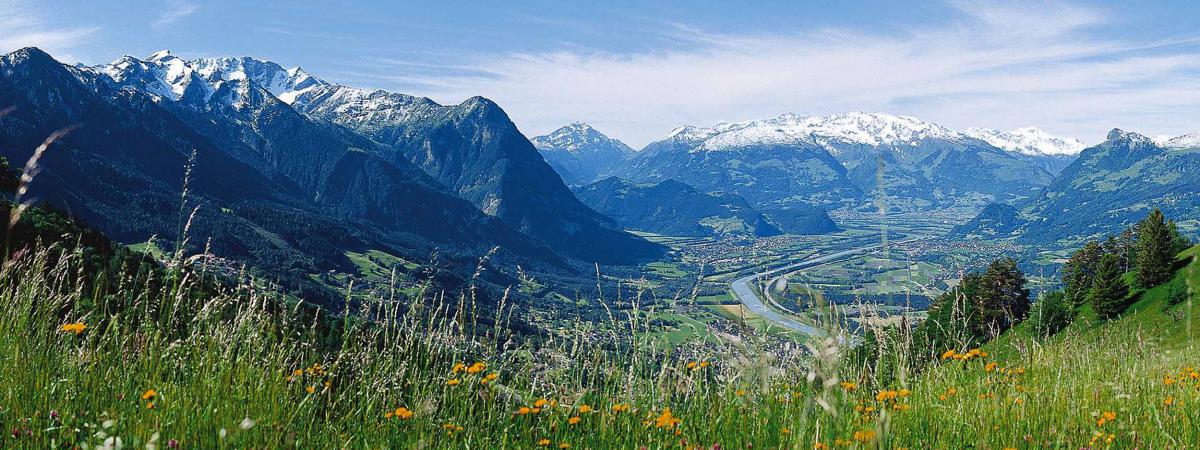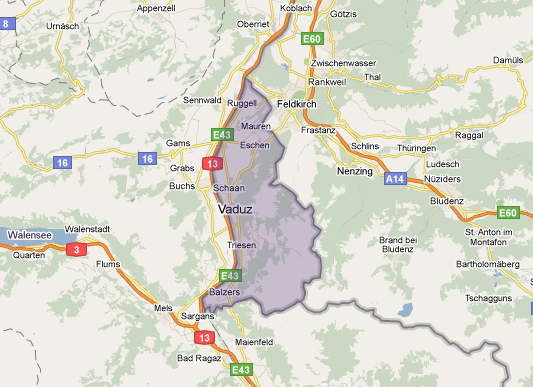

Geography
Liechtenstein has an area of 62 square miles (about the same geographic size as Chiang Mai), inhabited by roughly 40,000 people. It borders Liechtenstein in the south and west and Austria in the east and north. The total length of its borders is 47 miles. The country lies at an elevation of 1,486 feet above sea level. The highest mountain in the country is the Grauspitz at 8,527 feet.
The floor of the Rhine Valley covers half of the country. It is the most populous and arable area of Liechtenstein, since the rest of the country consists of rougher alpine terrain. In the Rhine Valley floor, a wide range of transitions between sand, peat, sandy clay, and clay soil can be found. The soils of the Rhine Valley slope consist of detritus, moraine deposits, and some loess. Mountain ranges crossing the country from south to north are foothills of the Rätikon. The Eschnerberg at 2,395 feet stands in the valley, while the mountainous part in the east of the country is formed out of three high-lying valleys.
From a geological standpoint of view the Liechtenstein region is very diverse: The Western and Eastern Alps collide in the middle of Liechtenstein. The boundary runs northeast, from Luziensteig through Vaduz. The largest part of the Alpine area belongs to the East Alpine facies, while the Fläscherberg and Schellenberg jut out of the Rhine Valley as foothills of the Helvetic zone. More (PDF, 26.52 KB)
Climate
Annual precipitation measures between around 35 and 47 inches. In the mountainous area, precipitation can reach 75 inches. In the winter, temperatures seldom drop below 15 degrees Fahrenheit, while the average temperatures in the summer oscillate between 68 and 82 degrees.
Despite the mountainous location of the country, the climate can therefore be described as mild. It is heavily influenced by the south wind (Föhn). Wine and corn thrive primarily because of the moderating influence of this warm south wind. It lengthens the vegetation period in the spring and the fall. However, it sometimes also has the negative effect of drying out the soil and damaging the cultivation of fruit.
